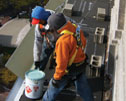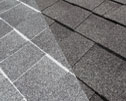Certain roof system types historically have been granted building code waivers from testing to determine their external fire-resistance classifications. However, changes incorporated into the International Building Code, 2009 Edition (IBC) alter these waivers and necessitate fire testing to serve as the basis of most roof systems' fire-resistance classifications.
If you are involved with roof system manufacturing, sales, design or installation, I encourage you to be familiar with these code changes and the specific roof system types the changes affect.
Fire classifications
Most building codes divide roof assemblies into three classifications for the purpose of designating their resistances to external fire exposure. Class A roof assemblies are effective against severe fire exposure; Class B roof assemblies are effective against moderate fire exposure; and Class C roof assemblies are effective against light fire exposure.
Class A, B and C roof assemblies are tested and listed according to ASTM E108, "Standard Test Methods for Fire Tests of Roof Coverings," or UL 790, "Standard Test Methods for Fire Tests of Roof Coverings."
For certain roof system types, codes historically have granted waivers from requiring ASTM E108 or UL 790 testing. For example, brick, masonry, exposed concrete roof decks, slate, clay or concrete tile, and ferrous or copper shingles or sheets (panels) had been considered as having a Class A fire resistance without testing. Similarly, other metal (such as aluminum) sheets and shingles had been considered as having a Class B fire resistance without testing.
2009 changes
In IBC's 2009 edition, the code's waiver from fire testing changed.
Roof systems consisting of ferrous or copper shingles or sheets, metal sheets and shingles, clay or concrete roof tile, or slate now only are granted waivers from testing if installed over noncombustible roof decks. Similarly, roof systems consisting of ferrous, copper or metal sheets installed on noncombustible framing without roof decks are considered to be Class A-equivalent without testing.
As a result of this code change, metal panel and shingle, clay and concrete tile, and slate roof coverings installed over combustible roof decks (oriented strand board, plywood and wood plank) need to be fire tested using ASTM E108 or UL 790 and listed by an approved testing agency to be considered code-compliant. Underwriters Laboratories (UL) Inc., FM Approvals and several other recognized testing agencies are considered approved testing agencies.
The code changed because though these roof coverings may be inherently noncombustible, components in these roof assemblies—including separator and underlayment sheets and roof decks—may burn when an assembly is subjected to fire and not truly perform as Class A- or Class B-rated assemblies.
Roof coverings consisting of brick, masonry or an exposed concrete roof deck still are considered to be Class A-equivalent without testing.
Now what?
With the changes to IBC's 2009 edition and its adoption by code jurisdictions, there clearly is a need for tested fire classifications for metal panel and shingle, clay and concrete tile, and slate roof coverings installed over combustible roof decks.
Because of the code's requirement for listing of fire classifications by an approved testing agency, it appears testing and listing will need to be manufacturer- (or supplier-) specific as well as roof assembly configuration-specific.
If you are involved with a roofing project using metal panel and shingle, clay and concrete tile, or slate roof coverings in a code jurisdiction that already has adopted—or soon will adopt—IBC's 2009 edition, consult the project's designer and roof covering materials supplier for appropriate external fire classification and code compliance information.
Mark S. Graham is NRCA's associate executive director of technical services.



